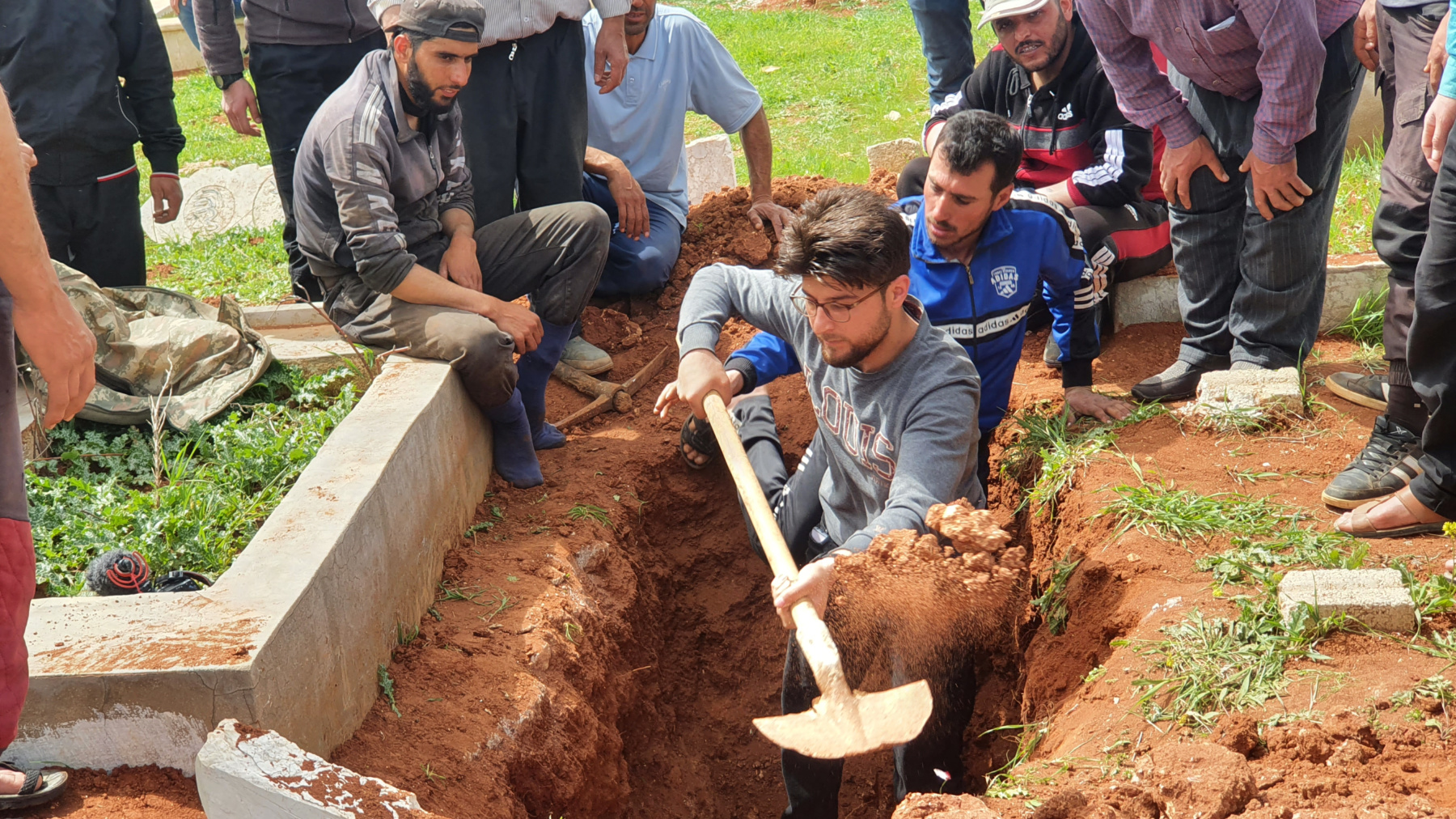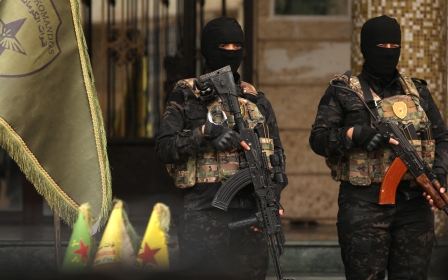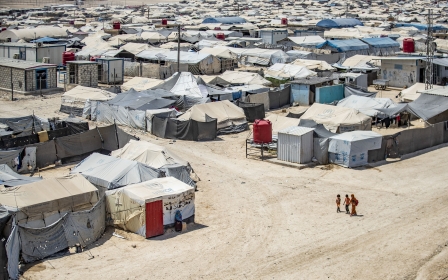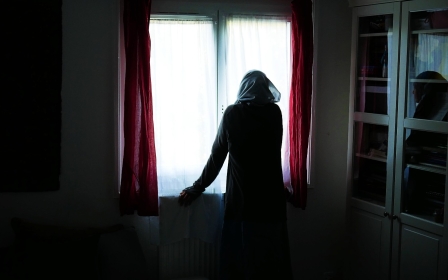Syria: Government shelling kills four children on their way to school

Four children were killed by government shelling in rebel-held northwestern Syria on Monday, civil defence teams and local sources told Middle East Eye.
The children were on their way to school in the town of Maaret al-Naasan, north of Idlib province, when a government missile targeted the area, killing three of them instantly, with one later succumbing to his wounds.
'One father was kissing his son and saying, ‘forgive me because I scolded you yesterday to study more'
- Laith al-Abdullah, civil defence
“It was before noon, the students in ninth and eighth grade were waiting for each other to go to school together," said Laith al-Abdullah, a civil defence volunteer.
“The area of the attack is not anywhere near the army, yet they were directly targeted, probably by a thermal rocket,” said Abdullah, who rushed with his colleagues to the area of the attack to search for survivors.
"The scene was so horrible that it can't be described. The children’s bodies were severely mutilated.
“What was found of one the children were only his feet. There was no destruction around them, but they turned into pieces."
Final goodbye
Pictures seen by MEE showed the children's mutilated bodies strewn around the street.
“One mother stood over her son’s body screaming and on the verge of collapse,” Abdullah said.
“The father of one of the children was kissing his son and saying, ‘forgive me because I scolded you yesterday to study more'.”
On the third day of Ramadan, the fasting and distressed families gathered to perform prayers for the children and bury them in the town’s cemetery.
Among them was Hassan Najjar, the children's teacher, who said the sadness on the face of the villagers cannot be described.
“People were working on their agricultural lands after the frost and hail had passed, and they were shocked by the attack,” Najjar added, speaking to MEE via WhatsApp.
“People have great fears about the escalation of attacks, yet they cannot leave because the conditions in the IDP tents are catastrophic.
“The regime [government forces] is about one kilometre away from the village. Every month or two they target us without any reason, which leads to disaster.”
Government shelling on 12 February killed six people in Maaret al-Naasan, including two women and two children.
The town, on the outskirts of which lies a Turkish observation point, is located on the frontline between government forces and the rebels.
The UK-based Syrian Observatory for Human Rights said it was unclear why the regime targeted the area.
Turkey, which supports opposition fighters in northern Syria, and the ally of the Syrian government, Russia, are overseeing a ceasefire that has been marred by widespread violations since it was announced in early 2020.
“This is a grave reminder that every war is a war against children,” Sonia Khush, the UK-based Save the Children Syria Response director, said in a statement.
“They were on their way to school – something that should be a completely normal part of daily life for children. But after 11 years of conflict, this is what daily life holds for the children of Syria.
Ongoing violations
United Nations spokesman Stephane Dujarric warned on Thursday that humanitarian conditions in northwest Syria are deteriorating due to the continuation of hostilities, and the deepening economic crisis.
“There are 4.1 million people in northwest Syria who depend on aid to meet their basic needs,” Dujarric told reporters.
On Wednesday, the United Nations sent 14 convoys of food under Security Council Resolution 2585, which calls for cross-border aid.
At least 30,000 children have been killed in Syria since the start of the war in March 2011, according to the Paris-based Syrian Network for Human Rights (SNHR).
The SNHR's 17-page monthly report said on Friday that 67 civilians, including 20 children, were killed by parties to the conflict in Syria during the month of March alone.
Middle East Eye propose une couverture et une analyse indépendantes et incomparables du Moyen-Orient, de l’Afrique du Nord et d’autres régions du monde. Pour en savoir plus sur la reprise de ce contenu et les frais qui s’appliquent, veuillez remplir ce formulaire [en anglais]. Pour en savoir plus sur MEE, cliquez ici [en anglais].





